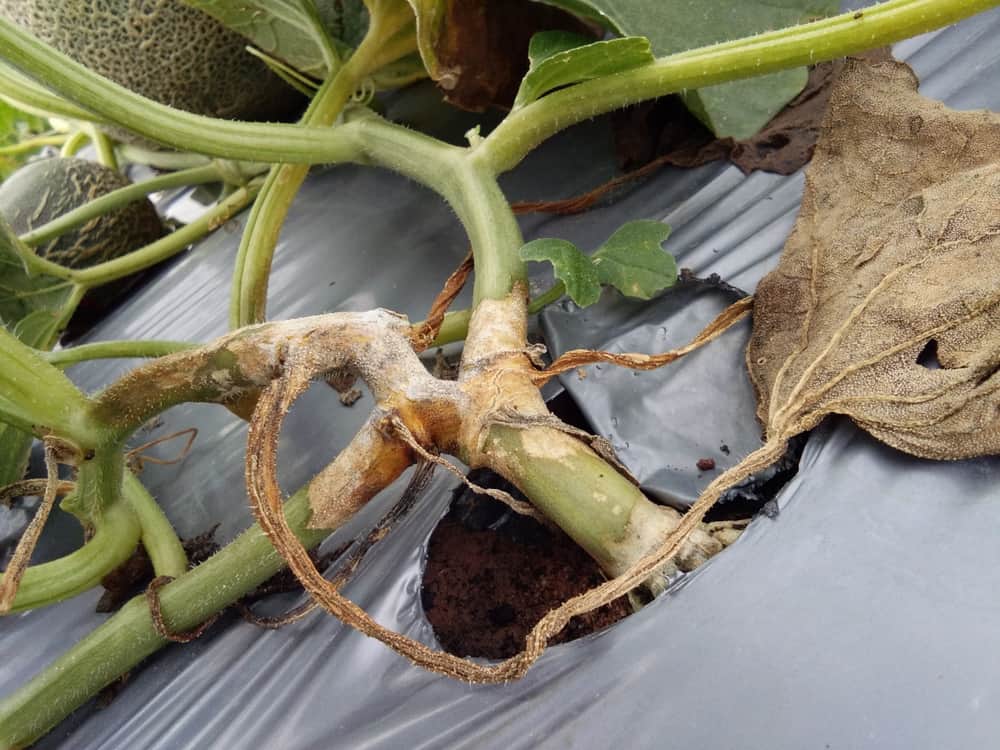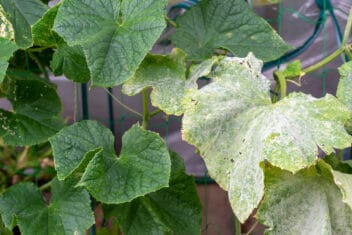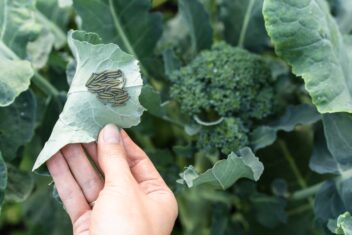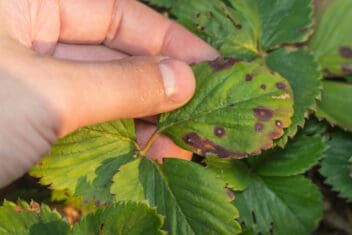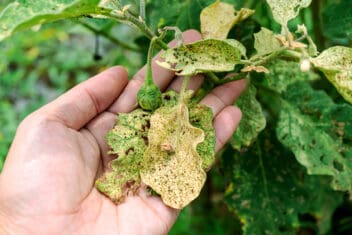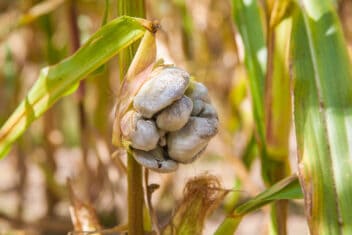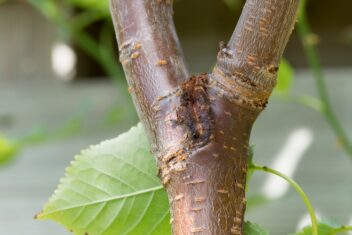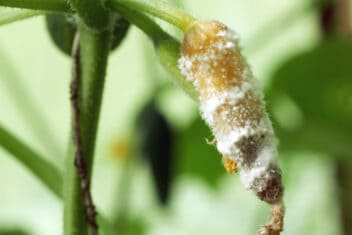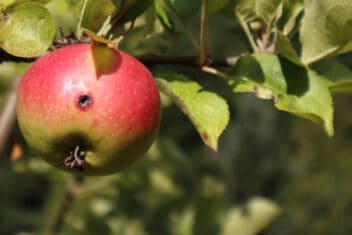Have you heard of “gummy stem blight” before? It’s occasionally referred to as “black rot” or “alligator skin” and is one of the creepier-looking fungal blights that may appear in your garden or homestead.
Once it makes an appearance, you need to act quickly before it spreads. It is capable of spreading rapidly and it can absolutely devastate your crop. Read on to learn how to deal with it!
What is Gummy Stem Blight?
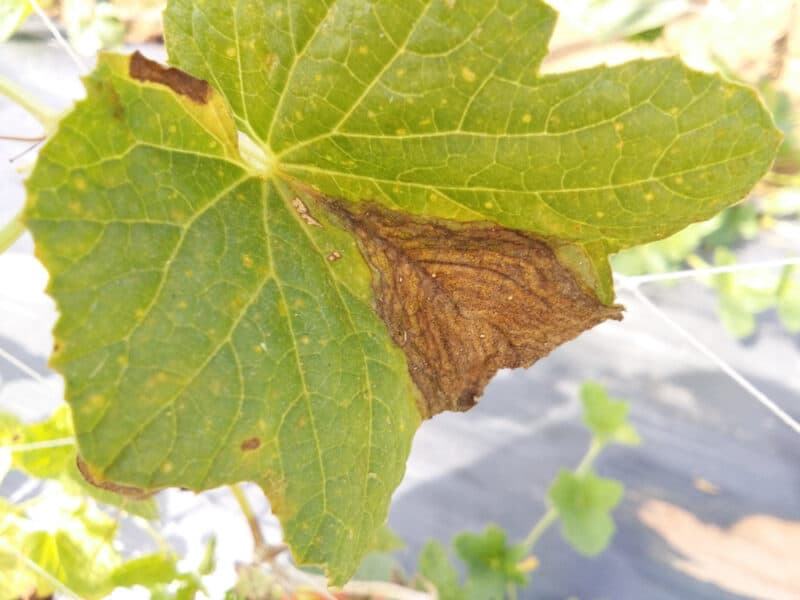
This blight is a disease that affects explicitly members of the Cucurbitaceae family. As such, it can wreak havoc on cucumbers, melons, zucchinis, cucamelons, pumpkins, and squashes.
It’s caused by a fungal plant pathogen called Didymella bryoniae (anamorph Phoma cucurbitacearum), and it’s a terrible pathogen to contend with.
When it establishes itself, it renders the entire plant useless. It doesn’t remain in the stem or leaves but manages to make its way into every cell, right down to the seed. This is particularly devastating if you’re growing multi-purpose foods like pumpkins for flesh and seeds.
Gummy stem blight is highly contagious and can annihilate your entire crop if you aren’t diligent about it. Fortunately, it’s easy to spot while still in its early stages so that action can be taken immediately.
Identification
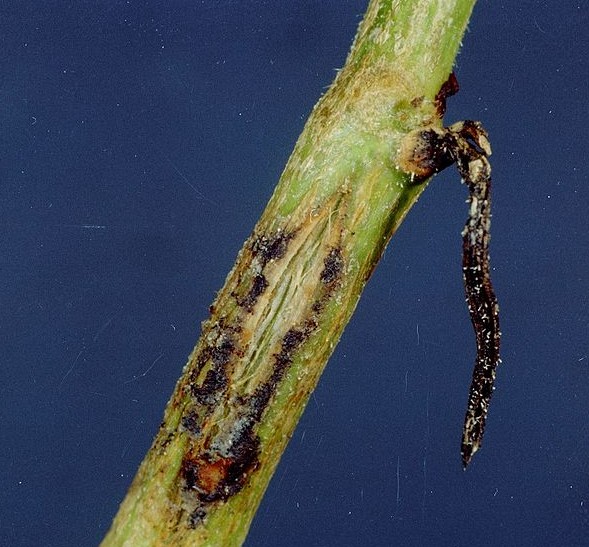
On young plants, initial hints that you may be dealing with gummy stem blight will be brown discolorations on the leaf edges. These are usually brown but may be haloed in darker brown or black.
Occasionally they might also have lesions on the centers of the leaves, but those are more commonly seen on older specimens.
Although this pathogen is known as “gummy stem,” that symptom doesn’t show up until the plant is fully grown. Once your plants are flowering or fruiting, that’s when the issues start to appear at the stem level.
The first signs on more mature plants may be oozing stems. You’ll see brown or black beads of fluid weeping forth from stem lesions, which will be sticky to the touch (hence the “gummy” part of their name).
Leaves may display browned edges, with dark, black-haloed lesions that eventually turn necrotic and black before the leaves fall off.
Signs on Fruits
If any fruit has developed, it’ll also show brown lesions that look like large, soft bruises. These will also be ringed with black; a single lesion will render the entire fruit inedible. Furthermore, any seeds developing within the fruit will be unusable, as they’ll also be infected with the pathogen.
You may also see necrosis on the fruit-bearing stalks. Additionally, even if the stalks aren’t blackened and withered, they may be too weak to support the fruits they’re growing.
Treatment
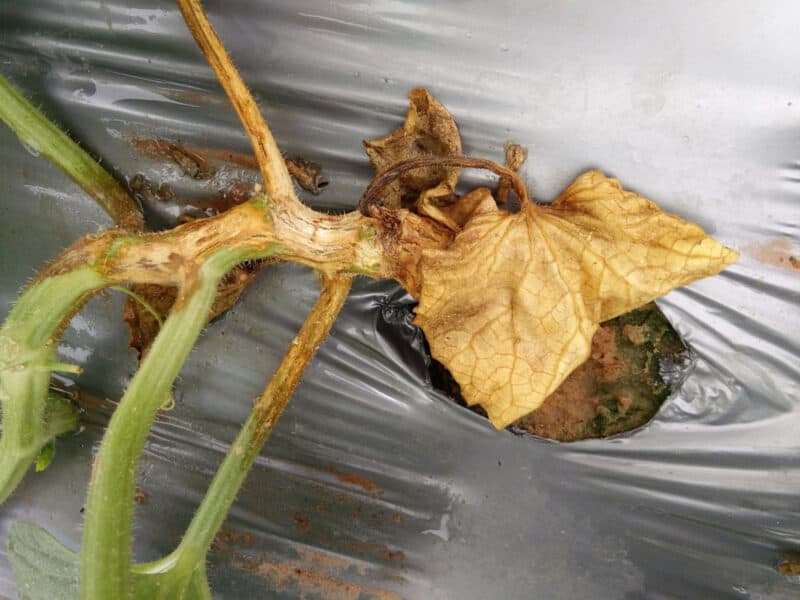
There is no treatment for gummy stem blight once it’s established: all you can do is pull up the plants and burn them. Then, even if your other plants don’t show any sign of the blight, treat them with a wide-spectrum fungicide just in case.
Although there isn’t a specific cure for gummy stem, you may be able to kill off existing spores before they gain purchase on your other plants.
Since either seeds or soil can host this fungal blight, prevention for the following season is the only real recourse you can take.
Practice diligent crop rotation, and never plant cucurbits in the same area two years in a row. Additionally, try to grow your cucurbits vertically rather than letting them sprawl on the ground.
This doesn’t just reduce the possibility of having them infected with gummy stem but can also reduce other pathogens such as powdery or downy mildew.
Choose Healthy Plants
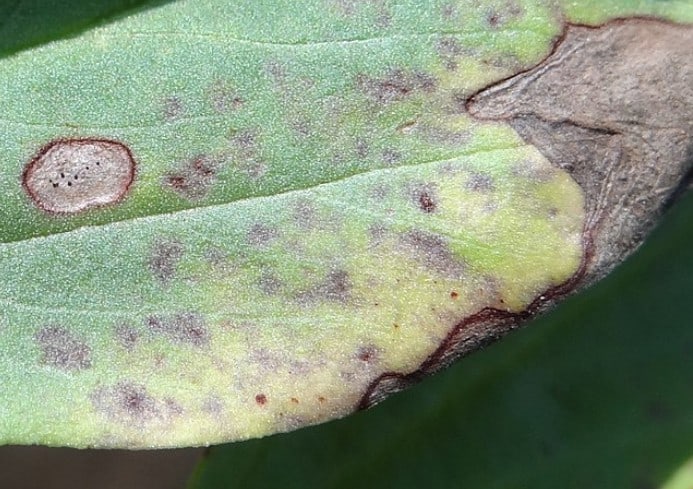
You won’t be able to tell if the seeds you buy are infected with gummy stem blight. As such, your best bet is to buy them from reputable companies and try to order seeds resistant to this pathogen.
This infection thrives in hot, wet weather, and the spores spread just as easily through the air as they do through the soil. Watch how water moves through your garden, as that may be a primary pathogenic dispersal conduit.
If you’re buying seedlings, check them thoroughly to see if any of their edges look brown or dry. Keep an eye out for brown lesions as well. If you see any signs like these, don’t buy them.
Focus on Good Garden Hygiene
After harvest, eliminate as much plant debris as possible from the soil’s surface. Then turn over the soil to allow the sun to kill off lingering spores.
Spraying the area with a copper– or sulfur-based fungicide may be of benefit, and be sure to nourish the soil with beneficial mycorrhizae before planting anything in it the following spring.
If you find gummy stem blight on your plants, you’ll need to be incredibly diligent so you don’t accidentally spread it to other parts of your garden. As mentioned earlier, this pathogen is extremely contagious.
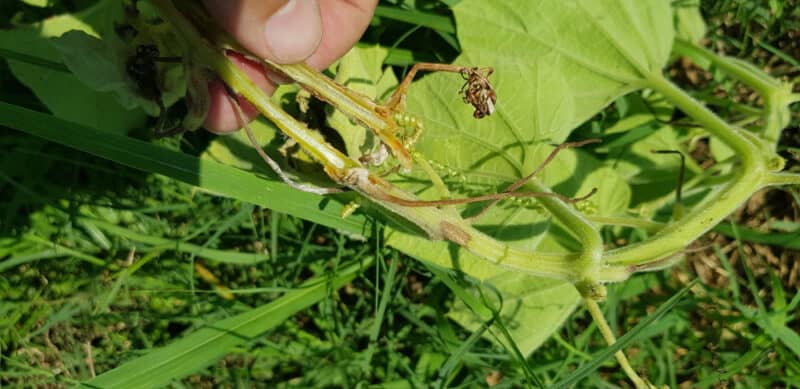
Keep a change of clothes and shoes handy so you don’t track spores from one part of the garden into another.
For example, if you’re treating an area with this blight, wear plastic sandals that can easily be disinfected in a bucket of hot bleach water when you’re done. Then change into a clean pair of rubber boots and tend to your other plant babies.
If you practice this type of diligent hygiene and ensure that you purchase blight-resistant seeds or seedlings, you might be able to avoid gummy stem blight in your own crops. Be sure to check on your plants every day so you can catch potential issues as soon as they appear and act quickly if and when they do.
Good luck!
